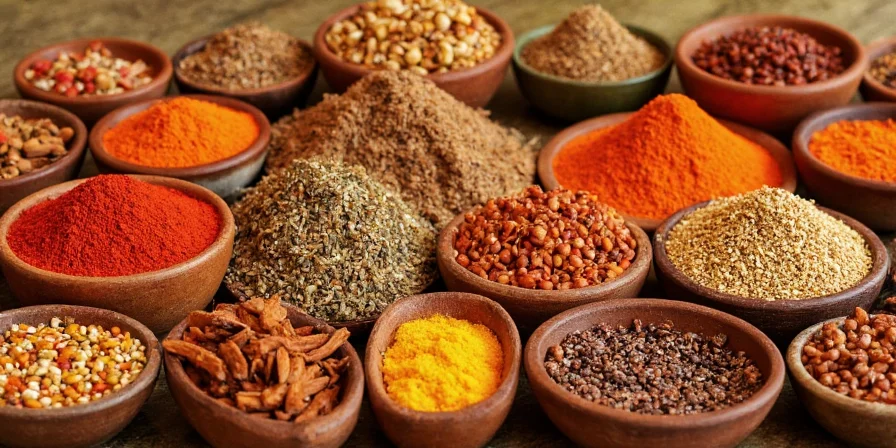Exploring the Richness of Indian Spices
Indian cuisine is renowned across the globe for its vibrant flavors, rich aromas, and the intricate use of spices. Spices are the heart and soul of Indian cooking, transforming simple ingredients into extraordinary dishes. This blog takes you on a journey through the world of Indian spices, exploring their significance, varieties, and the cultural traditions surrounding them.
The Essence of Indian Spices
Spices in India are not merely flavor enhancers; they are deeply rooted in the country’s history, culture, and health practices. India is often referred to as the 'land of spices' due to its vast array of spices that are integral to its culinary traditions.
Historical Overview
Historically, Indian spices were highly sought after by traders and explorers. The spice trade played a vital role in shaping the economy and culture of India. Spices such as black pepper, cardamom, and turmeric were once considered more valuable than gold and were instrumental in establishing trade routes.
Health Benefits of Indian Spices
Beyond their culinary applications, many Indian spices are celebrated for their medicinal properties. Here’s a look at some popular spices and their health benefits:
- Turmeric: Known for its anti-inflammatory and antioxidant properties.
- Ginger: Aids digestion and helps in reducing nausea.
- Cumin: Improves digestion and boosts the immune system.
- Coriander: Rich in antioxidants and helps in detoxification.
- Black Pepper: Enhances the bioavailability of nutrients.
Varieties of Indian Spices
The variety of spices used in Indian cuisine is staggering. Each region of India has its unique spices, contributing to the diverse culinary landscape of the country. Below is a table showcasing some common Indian spices along with their characteristics:
| Spice | Flavor Profile | Common Uses |
|---|---|---|
| Turmeric | Earthy, bitter | Curry, rice dishes |
| Cumin | Warm, nutty | Curries, stews |
| Coriander | Citrusy, sweet | Salsas, curries |
| Cardamom | Sweet, spicy | Desserts, chai |
| Mustard Seeds | Pungent, slightly bitter | Pickles, tempering |
Regional Specialties
Each region of India has its unique spices that define its local cuisine. For example:
- North India: Known for its use of garam masala, a blend of spices including cardamom, cloves, and cinnamon.
- South India: Famous for its use of mustard seeds, curry leaves, and asafoetida in traditional dishes like sambar and rasam.
- East India: Known for its use of panch phoron, a five-spice blend of mustard seeds, fenugreek, nigella, cumin, and fennel.
- West India: Renowned for its liberal use of red chili powder, turmeric, and coconut in dishes like vindaloo and dhansak.
Culinary Techniques Involving Spices
Using spices in Indian cuisine requires specific techniques that enhance their flavors and aromas. Here are a few foundational techniques:
Tempering (Tadka)
Tempering is a traditional method of cooking spices in oil or ghee. This technique releases the essential oils of the spices, enhancing their flavor. Typically, whole spices like cumin seeds, mustard seeds, and dried red chilies are added to hot oil, resulting in a fragrant and flavorful base for dishes.
Roasting Spices
Dry roasting spices before grinding them is a common practice. This process intensifies their flavor and aroma, making them more potent. Spices like coriander seeds, cumin seeds, and black pepper are often roasted in a pan until fragrant.
Making Spice Blends
Indian cuisine utilizes various spice blends that bring complexity to dishes. Some notable spice blends include:
- Garam Masala: A warm blend typically made with cardamom, cinnamon, cloves, and black pepper.
- Chaat Masala: A tangy blend often used in street food, containing dried mango powder, cumin, and chili powder.
- Ras el Hanout: A North African-inspired blend that is sometimes used in Indian cooking, featuring spices like cinnamon, cardamom, and turmeric.
Indian Spices in Global Cuisine
As globalization continues to influence culinary practices, Indian spices have found a place in kitchens around the world. Chefs and home cooks alike are experimenting with these spices to create fusion dishes that blend different culinary traditions.
Popular Fusion Dishes
- Turmeric Latte: A global phenomenon, this beverage combines turmeric with milk (or plant-based alternatives) and spices like cinnamon and ginger.
- Indian Spiced Tacos: Incorporating spices like cumin and coriander into taco fillings for a unique twist.
- Curry Risotto: A fusion of Italian and Indian cuisines, using traditional risotto techniques with Indian spices.
Conclusion: The Timeless Legacy of Indian Spices
Indian spices are not just ingredients; they carry stories of culture, history, and health. From their origins in ancient trade routes to their modern-day applications in kitchens worldwide, spices continue to shape our culinary experiences. Whether you're enjoying a rich curry or a simple spiced tea, Indian spices invite you to explore their diverse flavors and health benefits.
As you delve into the world of Indian spices, remember that each spice has its unique journey and significance. Embrace the flavors, experiment in your kitchen, and celebrate the rich traditions that make Indian spices a treasured global heritage.











 浙公网安备
33010002000092号
浙公网安备
33010002000092号 浙B2-20120091-4
浙B2-20120091-4